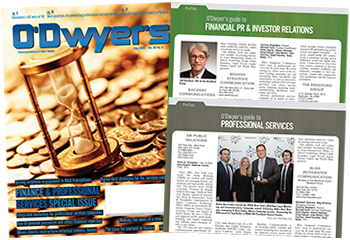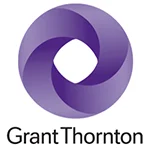 Greg Hassel |
When financial services companies are making money, partnerships with third-party marketing and PR agencies don’t seem like an expense; they’re often viewed as a critical business function. But when the economy is in decline? The agency is one of the first line items to go.
Given the current economic climate, it’s easy to understand why agencies are feeling good. The Dow is holding steady after a tremendous year in 2017. Unemployment is down. Corporate earnings have impressed. Interest rates are rising. Consumers are spending money. Tweets, tariffs and trade wars have been shrugged off like defenders standing in the way of a LeBron James drive and dunk.
|
|
But a strong economy doesn’t mean that agency budgets are secure. Regardless of macroeconomic conditions, there’s always potential for an internal client shakeup that jeopardizes the agency-client relationship.
Today, there’s a shifting tide within the financial services sector that’s keeping agencies awake at night: financial services companies — especially larger ones — are breaking down traditional silos and reorganizing their external communication teams to increase collaboration and efficiencies.
Why now?
Though we’ve seen this restructuring more and more in recent years, the shift probably started in tandem with the rise of integrated communication. Financial -services companies have been slow to adapt to the changing PR and communication landscape, due largely to stricter regulatory and compliance measures. As those reins have loosened, though, we’ve seen more creative go-to-market communication strategies.
You see this from companies of all types, even the U.S. Securities and Exchange Commission (SEC). A poster organization for rigidity, the SEC deployed a powerful and effective campaign earlier this year to warn cryptocurrency investors of fake initial coin offerings. It created “HoweyCoins.com,” a fake ICO, which touted features that should have tipped off investors that it was too good to be true. Those who “bought” the coins were redirected to an SEC webpage that told them they had been duped. Could the SEC have written a press release or whitepaper about ICO red flags? Those tactics might have been a safer choice, but ultimately less impactful.
In order to encourage bolder, creative campaigns, we see a growing number of financial services companies restructuring their external communication function so that advertising, marketing and PR teams no longer work independent of one another.
Quick on your feet
This shift is being supercharged by the concept of becoming more “agile.” Leading consulting firms like McKinsey & Company and management publications like Harvard Business Review, among many others, have covered the topic of agile teams in great depth.
The premise is that smaller teams react to and problem solve real-world issues more quickly and productively in real time. While this management concept lends itself more neatly to industries like software development, it’s easy to see how agile teams can make a more purposeful impact for financial services companies.
Historically, a client will group its business segments — and target audiences — under an external communication function. For example, a bank client’s in-house PR team may be responsible for the corporate bank, retail bank and wealth management arm. The in-house advertising and marketing teams may have mandates for those same business lines.
With agile teams, external communication functions are grouped under business segments. For that same bank client, an agile wealth management team can plan for and react swiftly with an integrated plan to connect with external audiences on timely topics like the fiduciary rule’s extinction and proposed 401k provisions. Multiple creative disciplines can collaborate quickly to weave together cohesive messaging points through proactive media relations efforts, content collateral for customers and prospects, and even paid campaigns.
Agency impact
I’ve always felt that change is good. I’ve also had people tell me that I’m crazy for thinking that change is good. But let’s all agree on one thing: when an agency hears that a client’s external communication team is undergoing an internal restructure, there’s a moment of panic.
Reorganization has led to client roles changing — or even disappearing. It’s not like advertising, marketing and PR teams are being combined to form a super team with hundreds of people. Often, it means the elimination of jobs. So that longtime PR contact who’s been a champion of your agency for years? He or she is no longer in a position of power.
Curveballs are part of agency life, and the “agile” restructuring concept has a knee buckling 12-to-6 action. It’s likely been popularized because regulatory and compliance restrictions have loosened, and financial services companies have more creative freedom. You can also point to newly appointed CMOs who want to shake things up, as well as, ironically, the strong economy. Companies are flush with cash and making M&A deals, which almost always lead to communication reorganization.
I do believe this shift is a good one. What’s happening with clients, in many ways, mirrors what’s taken place in our own industry. Remember how PR was more traditionally focused on media relations? When securing front page Wall Street Journal coverage above the fold or getting clients on CNBC was the only priority? Times have changed and service offerings have blurred. It’s no longer “how many media hits can you get for me?” It’s “how can you extend the life of this content or our message so that it reaches the most eyeballs?”
If your shop isn’t already offering and implementing integrated services, streamlined client organizations can pose a threat to your bottom line. Now more than ever, financial services clients are looking for agencies that are agile themselves, ones that can assist in the new age of digital communication and content marketing. In fact, integrated agencies are often pigeonholed into traditional PR functions — agile restructuring could unlock doors to untapped revenue streams.
As certain as everyone is about the uncertainty of the economy, you can bet that agile restructuring is going to continue at an accelerated pace.
***
Greg Hassel is a Vice President in the Financial Services Practice Group at Bliss Integrated Communication.



 Teneo is handling the initial public offering of CVC Capital Partners, one of Europe’s largest private equity firms with nearly $200B in assets under management.
Teneo is handling the initial public offering of CVC Capital Partners, one of Europe’s largest private equity firms with nearly $200B in assets under management. Brunswick Group represents Endeavor Group Holdings as it agrees to go private via its acquisition by Silver Lake technology investment firm, which is handled by Edelman Smithfield.
Brunswick Group represents Endeavor Group Holdings as it agrees to go private via its acquisition by Silver Lake technology investment firm, which is handled by Edelman Smithfield. Tod Donhauser, a nine-year veteran of Edelman, has joined H/Advisors Abernathy as managing director and head of its San Francisco office.
Tod Donhauser, a nine-year veteran of Edelman, has joined H/Advisors Abernathy as managing director and head of its San Francisco office. Intelligent Group Ltd, a Hong Kong-based financial PR firm, has priced its initial public offering of 1.9M shares at $4, which is the low end of the $4 to $5 range.
Intelligent Group Ltd, a Hong Kong-based financial PR firm, has priced its initial public offering of 1.9M shares at $4, which is the low end of the $4 to $5 range. Kekst CNC represents Grant Thornton as it sells a majority stake in its US arm to New Mountain Capital, which relies on Goldin Solutions, in what is billed as the largest PE investment in the accounting and advisory sector.
Kekst CNC represents Grant Thornton as it sells a majority stake in its US arm to New Mountain Capital, which relies on Goldin Solutions, in what is billed as the largest PE investment in the accounting and advisory sector.


 Have a comment? Send it to
Have a comment? Send it to 
No comments have been submitted for this story yet.